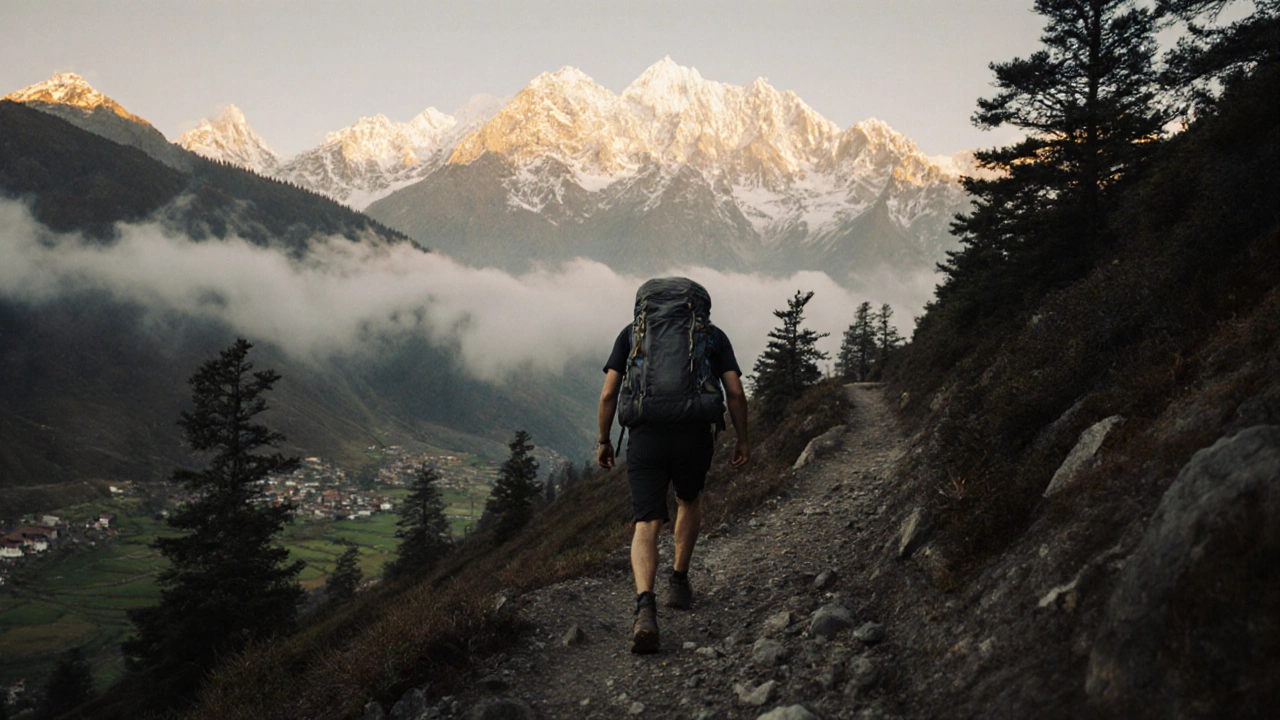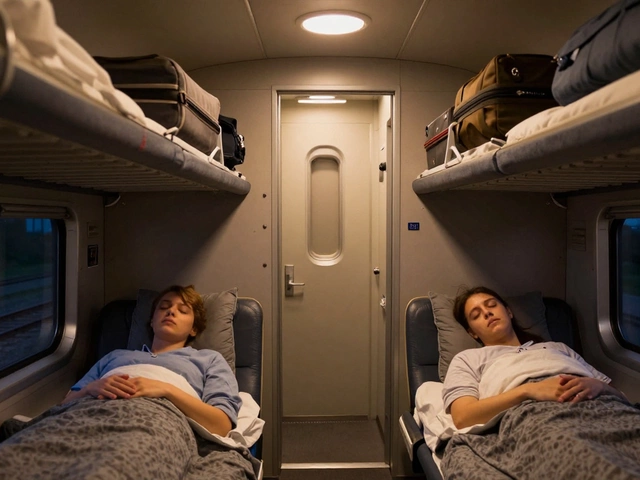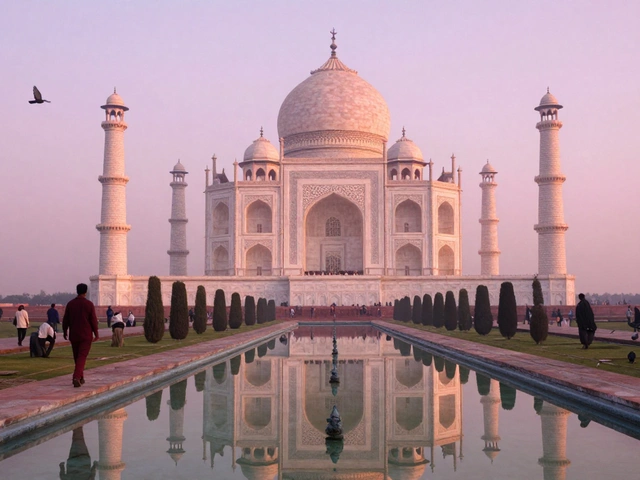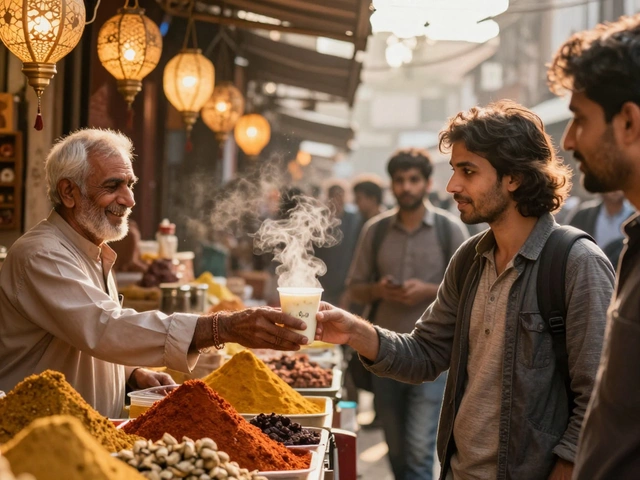Ever wondered if those long hikes up steep trails in the Himalayas are actually good for your body-or if they’re just a fancy way to tire yourself out? The answer isn’t just yes. Trekking in India doesn’t just give you Instagram-worthy views. It rewires your body, clears your mind, and rebuilds your stamina in ways most gym routines never can.
Your Heart Doesn’t Need a Machine
Forget treadmills and stationary bikes. When you trek for even a few hours a week, your heart learns to work smarter. A 2023 study from the Indian Journal of Physiology and Pharmacology tracked 300 regular trekkers in Uttarakhand over 12 months. Those who hiked at least twice a month saw an average 15% improvement in cardiovascular endurance. Their resting heart rates dropped. Blood pressure stabilized. Their bodies became more efficient at using oxygen-no pills, no machines, just elevation and effort.
That’s because trekking is steady, sustained activity. Unlike sprinting or weightlifting, it keeps your heart in that sweet spot-moderate intensity, long duration. It’s not about pushing to failure. It’s about keeping going. And that’s exactly what your heart needs.
Stronger Bones, Fewer Aches
Most people think walking is gentle on the joints. But trekking? It’s stronger. When you hike uphill on uneven ground-like the trails near Manali or Nag Tibba-your muscles and bones adapt. Your legs build density. Your hips and knees get reinforced by the constant, low-impact resistance of climbing. A 2024 survey by the Himalayan Trekking Association found that 78% of regular trekkers over 40 reported less joint pain than before they started.
And it’s not just your legs. Carrying a pack, even a light one, forces your spine, shoulders, and core to engage. Your posture improves. Your back stops aching. You stop slouching at your desk because your body remembers what upright feels like.
Mental Reset on a Mountain Trail
Stress doesn’t vanish because you want it to. It vanishes when your brain stops spinning. Trekking does that. The rhythm of putting one foot in front of the other, the sound of wind through pine trees, the silence broken only by your breath-these aren’t just nice moments. They’re neurological resets.
Research from the University of Delhi found that people who spent just three days trekking in the Western Ghats showed a 22% drop in cortisol levels-the body’s main stress hormone. Their attention spans improved. They slept deeper. One participant, a software engineer from Bangalore, said, “I stopped checking my phone the moment I hit the trail. By day two, I didn’t miss it.”
You don’t need to go to Everest Base Camp to feel this. Even a short trek to Kedarkantha or Nag Tibba for a weekend is enough to reset your mental clutter.

Weight Loss That Doesn’t Feel Like a Diet
Want to lose weight without counting calories or skipping meals? Trekking does it quietly. A 60kg person hiking uphill for two hours burns between 500 and 700 calories. That’s more than an hour on the elliptical. And because trekking builds muscle, your body burns more calories even when you’re resting.
It’s not about running faster. It’s about staying on the move longer. Most people who trek regularly lose weight without even trying. They eat better because they feel better. They crave real food-warm dal, fresh fruit, nuts-not processed snacks. Their energy levels rise, so they move more throughout the day. It’s a chain reaction.
Immunity Gets a Boost
When you trek in the mountains, you’re not just exercising. You’re breathing cleaner air. You’re exposed to natural sunlight, which helps your body make vitamin D. You’re surrounded by trees and plants that release phytoncides-natural compounds that boost white blood cell activity.
A 2023 study from the All India Institute of Medical Sciences compared two groups: one that trekked monthly in the Garhwal region, and another that stayed in cities. After six months, the trekkers had 30% higher natural killer cell counts-immune cells that fight viruses and tumors. They also got sick less often. Fewer colds. Fewer flu episodes. Just from being outside, moving, and breathing.
It’s Not Just Physical-It’s Emotional
Trekking in India isn’t just about fitness. It’s about connection. You’re walking paths that pilgrims have taken for centuries. You’re passing villages where people live simply, with less noise and more kindness. You’re reminded that life doesn’t need Wi-Fi to be full.
Many trekkers report feeling more grounded. Less anxious. More patient. One woman from Pune told me, “After my divorce, I didn’t know how to feel again. I went on a solo trek to Roopkund. I cried for three days straight. But by the end, I felt like I’d been given back to myself.”
That’s not magic. It’s nature meeting movement. The combination of physical challenge, solitude, and awe rewires your emotional landscape.

Who Should Avoid Trekking?
It’s not for everyone-and that’s okay. If you have severe heart disease, uncontrolled high blood pressure, or recent joint surgery, talk to your doctor first. Trekking at high altitudes (above 3,000 meters) can be risky if you’re not acclimatized. Altitude sickness is real. Headaches, nausea, dizziness-these aren’t signs you’re “pushing through.” They’re warnings.
Start slow. Pick easy trails first: Valley of Flowers (easy-moderate), Dayara Bugyal, or Kuari Pass. Don’t rush. Bring water. Eat regularly. Sleep well. Listen to your body. You don’t need to summit Everest to get the benefits.
Where to Start in India
You don’t need gear or training to begin. Just shoes and a willingness to walk. Here are three beginner-friendly treks with big health rewards:
- Dayara Bugyal (Uttarakhand): 12 km round trip, 3,000m altitude. Gentle slopes, wildflowers, panoramic views. Perfect for first-timers.
- Kedarkantha (Uttarakhand): 20 km over two days. Snow in winter, green meadows in summer. Great for building stamina.
- Valley of Flowers (Uttarakhand): 14 km one way. UNESCO site. Low altitude, flat trails, stunning blooms. Ideal for mental calm.
Book a local guide if you’re new. They know the trails, the weather, and how to pace you. No need to go alone on your first trip.
What You’ll Notice First
After your first trek, you won’t wake up tired. You’ll sleep deeper. Your appetite will feel more natural. You’ll stop reaching for sugar. You’ll notice birds you never heard before. You’ll smile more-without knowing why.
That’s the quiet power of trekking. It doesn’t shout. It doesn’t sell supplements. It just asks you to walk. And in walking, you heal.
Is trekking better than going to the gym for overall health?
Trekking beats the gym for many people because it combines cardio, strength, balance, and mental reset-all in one. Gyms focus on isolated muscle groups and machines. Trekking uses your whole body on uneven terrain, which builds functional strength. It also lowers stress and improves sleep in ways indoor workouts rarely do. But if you love the gym, keep going. The best exercise is the one you’ll stick with.
Can trekking help with anxiety and depression?
Yes. Studies show that spending time in nature while moving-like trekking-lowers cortisol and increases serotonin. The rhythmic motion of walking, combined with natural beauty, helps quiet the mind. Many therapists in India now recommend nature walks or short treks as part of treatment plans for mild to moderate anxiety and depression. It’s not a replacement for therapy, but it’s a powerful support.
Do I need special gear to start trekking?
No. For beginner trails, you just need good walking shoes with grip, a light backpack, water, and weather-appropriate clothes. You don’t need expensive boots or technical gear until you start trekking at higher altitudes or in snow. Many people start with sneakers and upgrade later. Focus on comfort, not brand names.
How often should I trek to see health benefits?
Twice a month is enough to notice changes in energy, sleep, and mood. Once a week brings faster results-better stamina, stronger muscles, lower stress. But even one long trek every few months can reset your system. Consistency matters more than intensity.
Is trekking safe for older adults?
Absolutely-if done wisely. Many people over 60 trek regularly in India. The key is choosing easy trails, going slow, staying hydrated, and listening to your body. Trails like Valley of Flowers or Nag Tibba are perfect. Always carry a phone, tell someone your route, and avoid high altitudes unless you’re acclimatized. Trekking can help prevent falls, improve balance, and keep joints flexible as you age.
If you’ve been thinking about trekking but kept putting it off, here’s the truth: you don’t need to be fit to start. You get fit by starting. The mountains aren’t waiting for you to be perfect. They’re waiting for you to show up-with tired legs, a full heart, and one step forward.






